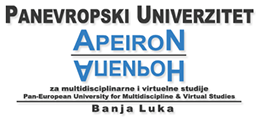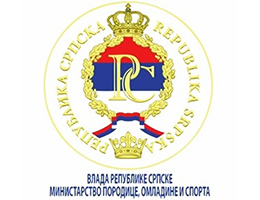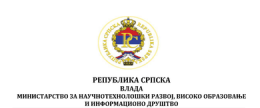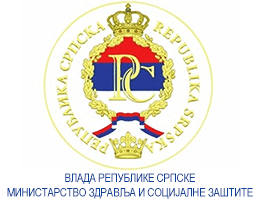Contribution of Some Anthropometric Measurements and Pulmonary Volumes to the Numerical Achievement of 800-Meter Event Runners in Palestine
Volume 14, Issue 2 (2024)
Volume 14, Issue 2 (2024)
Contribution of Some Anthropometric Measurements and Pulmonary Volumes to the Numerical Achievement of 800-Meter Event Runners in Palestine
Abstract:
The study aimed to identify the contribution of some anthropometric measurements and pulmonary volumes
to the Numerical Achievement of runners in the 800-meter running event at Palestine. The study was conducted on a purposely
designed sample of (17) runners in Palestine, aged between (18-22) years. The researchers used the descriptive
analytical approach because it suits the nature of the study. Anthropometric measurements were performed related to (age,
body mass, height, arm length, leg length, thigh length, lower leg length, instep length, chest circumference, chest circumference
with inspiration, abdominal circumference, thigh circumference, Leg calf, upper arm circumference, and related
Pulmonary volume measurements. Related Pulmonary volume measurements were performed (VC, FVC, FEV1, FWV1/
FVC%, MVV, TV, RV), and after the data was collected, it was processed statistically using SPSS. The results of the study
showed that the anthropometric measurement that have the most contribution In the Numerical Achievement of 800 meters
running event runners in Palestine was Height , which contributed to explaining (43.1 %) of the finishing time. The study
also found that Pulmonary volume measurements contributed most to the Numerical Achievement For runners of the 800-
meter running event in Palestine, was Vital Capacity (VC)which explained (39.1%) of the time Achievement.
Researchers recommend that the predictive equations that have been developed should be used as predictors for the numerical
achievement of the 800-meter running event.
Keywords:
Anthropometric measurements, Pulmonary volumes, Numerical achievement, runners, Vital capacity.
Full Text:
References:
Akhade, V., & Muniyappanavar, N. S. (1970). The effect of running training on pulmonary function tests. National Journal of Physiology,
Pharmacy and Pharmacology, 4(2), 168-168.
Akhade, V. V., & Muniyappanavar, N. S. (2017). Evaluation of pulmonary function in sportsmen playing different games. National Journal of
Physiology, Pharmacy and Pharmacology, 7(10), 1091.
Al-Dhiabat, N., & AlDhiabat, A. (2014). The relationship of anthropometric and physical measurements to the digital achievement of female
petanque players. Al-Aqsa University Journal, 18(2), 90-107.
Ali, E., & Nasser, A. (2016). Percentage of the contribution of anthropometric measurements to the stability tests of the broad and vertical
jump. Contemporary Sports Journal, College of Physical Education and Sports Sciences for Girls, University of Baghdad, 15(2), 1-8.
Anonymous, Z. S. (2006). The percentage of contribution of some physical characteristics and body measurements to the achievement of running
the 110-meter hurdles by isolating the effect of skill performance. (Unpublished master’s thesis)
Bhatt, M., Wankhede, T., Thapa, B., Kushwaha, A. S., Malhotra, V. K., & Hira, D. (1970). Relationship between short-distance run and variables
of pulmonary function tests. National Journal of Physiology, Pharmacy and Pharmacology, 5(2), 149-149.
Özgider, C. (2010). Four weeks of respiratory muscle training improves intermittent recovery performance but not pulmonary functions and
maximum oxygen consumption (vo2 max) capacity in young soccer players (Master’s thesis, Middle East Technical University).
Cheng, Y. J., Macera, C. A., Addy, C. L., Sy, F. S., Wieland, D., & Blair, S. N. (2003). Effects of physical activity on exercise tests and respiratory
function. British journal of sports medicine, 37(6), 521-528.
Drobnicc, F., Arrillaga, B., Ponsa, V., & Viscorb, G. (2021). Pulmonary capacity and alveolar gas diffusion in aquatic athletes: Implications for
performance and health. Apunts Sports Medicine, 56 (209): 100339.
Falaschetti, E., Laiho, J., Primatesta, P., & Purdon, S. (2004). Prediction equations for normal and low lung function from the Health Survey
for England. European Respiratory Journal, 23(3), 456-463.
Goswami, N. (2013). Prediction of performance ability of sprinters, jumpers and throwers in relation to selected motor fitness components and
physiological variables. Peer Reviewed Research Journal, 1(1), 86-98.
Gursavek, S., & Mishra, P. (2012). Relationship of Selected Anthropometric Measurements and Physical Variables to Performance in Triple
Jump. Indian Journal of Movement Education and Exercises Sciences, 2(2), 2249-6246.
Hanoun, L. A. Q. (2016). Anthropometric measurements impact on the level of sport achievement for physical education students in Palestine
Technical University (Kadoorie) (Doctoral dissertation).
Ja’afar, M. H., Ismail, R., Ismail, N. H., Md Isa, Z., Mohd Tamil, A., Mat Nasir, N., ... & Yusof, K. H. (2023, April). Prediction of Lung Function
Status Using Handgrip Strength and Anthropometry among the Healthy Malay Population in Malaysia. In Healthcare (Vol. 11,
No. 7, p. 1056). MDPI.
Kocahan, T., Akınoğlu, B., Mete, O., & Hasanoğlu, A. (2017). Determination of the relationship between respiratory function and respiratory
muscle strength and grip strength of elite athletes. Medical Journal of Islamic World Academy of Sciences, 25(4), 118-124.
Mazic, S., Lazovic, B., Djelic, M., Suzic-Lazic, J., Djordjevic-Saranovic, S., Durmic, T., ... & Zugic, V. (2015). Respiratory parameters in elite
athletes–does sport have an influence? Revista Portuguesa de Pneumologia (English Edition), 21(4), 192-197.
Megahed, M., Al-Torbany, M., Al-Ghool, M., & Tarek, Z. (2023). Effects of high-intensity interval training using “Tabata protocol” on respiratory
parameters, special endurance, and 800-m runners’ performance. Journal of Human Sport and Exercise, 18(4), 842-857.
Rathore, V. S., & Mishra, M. K. (2016). Anthropometric variables as predictors of speed ability of physical education students. International
Journal of Physical Education, Sports and Health, 3(1), 140-144.
Muhammad, S. M. (2015). The effect of absolute endurance training with the bio kinematic variables and achievement of the 1500 run juniors.
Journal of Physical Education Sciences, 8 (3): 243- 258.
Nehe, S., Ambad, R., & Singh, C. (2023). Effects of Training on Pulmonary Function Test in Long Distance Runners. International Journal of
Pharmaceutical and Clinical Research, 15(6): 1190-1195.
Omelchenko, O., Dolbysheva, N., Kovtun, A., Koshcheyev, A., Tolstykova, T., Burdaiev, K., & Solodka, O. (2023). Evaluation of respiratory
function indicators of elite athletes in academic rowing using the method of computer spirography. Pedagogy of Physical Culture and
Sports, 27(2), 173-182.
Parseh, A., & Solhjoo, M. H. (2015). Studying the relationship between body mass index with speed, agility and balance in male students of
13-15 years old. Indian Journal of Fundamental and Applied Life Sciences, 5(S2), 382-387.
Pourrahim Ghouroghchi, A., Akbari, F., & Birar, A. (2021). Relationship between Anthropometrical and Physiological Parameters with Running
Time of Elite Girls, Ardabil, Iran. International Journal of Pediatrics, 9(3), 13269-13280.
Salama, H., & Khalifa, R. (2018). Contribution of some anthropometric, physical and physiological measurements in the level of digital
achievement in a running for 400 meters for students in the field of physical education. The Swedish Journal of Scientific Research,
5(1), 12-21.
Salameh, H. (2017). Relationship of some anthropometric and physical measures with the perfor mance of the high jump event of physical
education students at the University “Khadouri”. An-Najah University Journal of Research (Humanities), 31(5): 779-805.
Salameh, H. (2018). Contribution of some Anthropometric, Physical and Physiological Measurements in Athletics Performance level in some
Track and Field events among physical education students at the University “Khadouri”. (Unpublished doctoral) thesis)
Salameh, H., Qadoume, A., & Abualia, M. (2020). Predictive ability of pulmonary volume measurements of the Physical Fitness Index among
the players of team sports games at Palestine Technical University” Kadoorie”. Journal of Physical Education and Sport, 20(4), 1909-
1916.
Seman, M. H. A., Sideek, M. A. M., & Abdul, M. I. H. (2022). Effects of Aerobic Exercise on Pulmonary Function among Healthy Adults.
Journal of Science and Management Research Vol, 10(2), 2600-738X.
Sekarbabu, K., Kulothungan, P. & Prabhu, R. (2019). Analysis of anthropometric, power, intermittent gait and performance related variables of
middle-distance runners. Journal for all Subjects, 8 (8): 1- 8.
Singh, L., & Malik, A. K. (2015). Selected anthropometric and physical fitness measures as predictors of performance in 400 meters track event. International Journal of Physical Education, Sports and Health, 1(4):70-72.
Singh, L., & Malik, A. K. (2015). Selected anthropometric and physical fitness measures as predictors of performance in 100 meters track
event. International Journal of Physical Education, Sports and Health, 2 (1): 86-86.
Zapartidis, I., Vareltzis, I., Gouvali, M., & Kororos, P. (2009). Physical fitness and anthropometric characteristics in different levels of young
team handball players. The Open Sports Sciences Journal, 2(1).
Zar, A., Gilani, A., Ebrahim, K. H., & Gorbani, M. H. (2008). A SURVEY OF THE PHYSICAL FITNESS OF THE MALE TAEKWONDO
ATHLETES OF THE IRANIAN NATIONAL TEAM. Facta Universitatis: Series Physical Education & Sport, 6(1).






